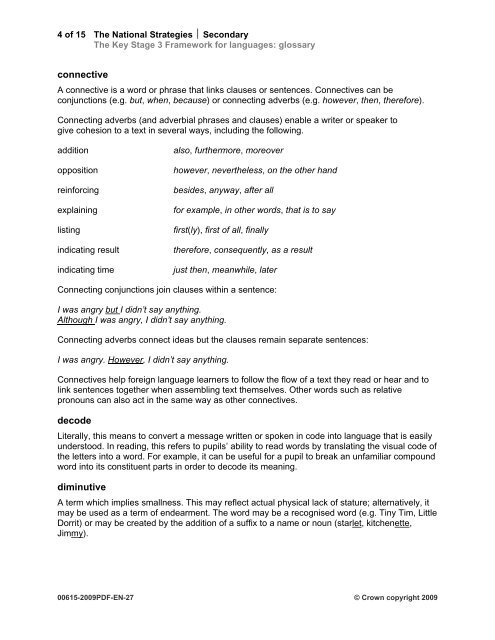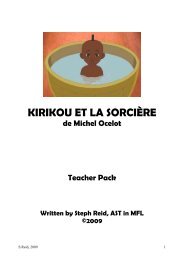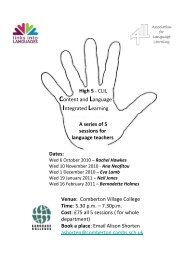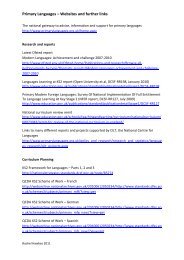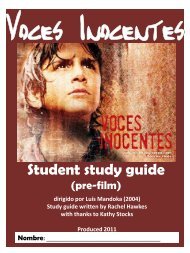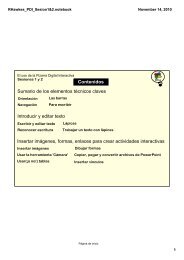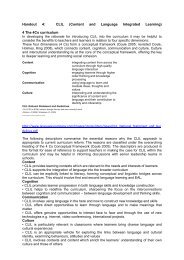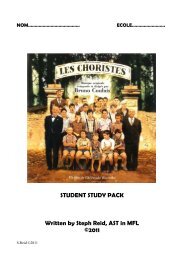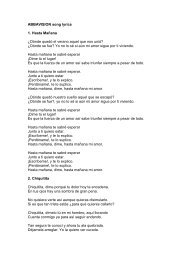Key Stage 3 Framework for languages ... - Rachel Hawkes
Key Stage 3 Framework for languages ... - Rachel Hawkes
Key Stage 3 Framework for languages ... - Rachel Hawkes
Create successful ePaper yourself
Turn your PDF publications into a flip-book with our unique Google optimized e-Paper software.
4 of 15 The National Strategies ⏐ Secondary<br />
The <strong>Key</strong> <strong>Stage</strong> 3 <strong>Framework</strong> <strong>for</strong> <strong>languages</strong>: glossary<br />
connective<br />
A connective is a word or phrase that links clauses or sentences. Connectives can be<br />
conjunctions (e.g. but, when, because) or connecting adverbs (e.g. however, then, there<strong>for</strong>e).<br />
Connecting adverbs (and adverbial phrases and clauses) enable a writer or speaker to<br />
give cohesion to a text in several ways, including the following.<br />
addition<br />
opposition<br />
rein<strong>for</strong>cing<br />
explaining<br />
listing<br />
indicating result<br />
indicating time<br />
also, furthermore, moreover<br />
however, nevertheless, on the other hand<br />
besides, anyway, after all<br />
<strong>for</strong> example, in other words, that is to say<br />
first(ly), first of all, finally<br />
there<strong>for</strong>e, consequently, as a result<br />
just then, meanwhile, later<br />
Connecting conjunctions join clauses within a sentence:<br />
I was angry but I didn’t say anything.<br />
Although I was angry, I didn’t say anything.<br />
Connecting adverbs connect ideas but the clauses remain separate sentences:<br />
I was angry. However, I didn’t say anything.<br />
Connectives help <strong>for</strong>eign language learners to follow the flow of a text they read or hear and to<br />
link sentences together when assembling text themselves. Other words such as relative<br />
pronouns can also act in the same way as other connectives.<br />
decode<br />
Literally, this means to convert a message written or spoken in code into language that is easily<br />
understood. In reading, this refers to pupils’ ability to read words by translating the visual code of<br />
the letters into a word. For example, it can be useful <strong>for</strong> a pupil to break an unfamiliar compound<br />
word into its constituent parts in order to decode its meaning.<br />
diminutive<br />
A term which implies smallness. This may reflect actual physical lack of stature; alternatively, it<br />
may be used as a term of endearment. The word may be a recognised word (e.g. Tiny Tim, Little<br />
Dorrit) or may be created by the addition of a suffix to a name or noun (starlet, kitchenette,<br />
Jimmy).<br />
00615-2009PDF-EN-27 © Crown copyright 2009


